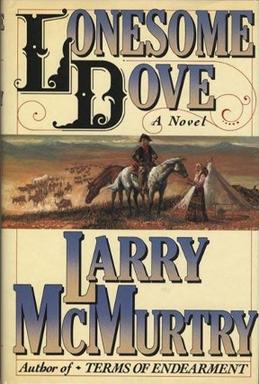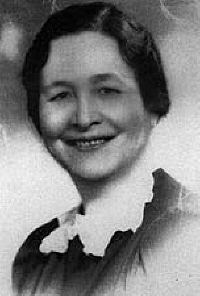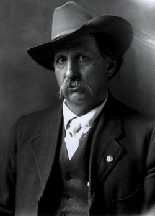
Lonesome Dove is a 1985 Western novel by American writer Larry McMurtry. It is the first published book of the Lonesome Dove series and the third installment in the series chronologically. It was a bestseller and won the 1986 Pulitzer Prize for Fiction. In 1989, it was adapted as a TV miniseries starring Tommy Lee Jones and Robert Duvall, which won both critical and popular acclaim. McMurtry went on to write a sequel, Streets of Laredo (1993), and two prequels, Dead Man's Walk (1995) and Comanche Moon (1997), all of which were also adapted as TV series.

Bobbi Lee Maracle was an Indigenous Canadian writer and academic of the Stó꞉lō nation. Born in North Vancouver, British Columbia, she left formal education after grade 8 to travel across North America, attending Simon Fraser University on her return to Canada. Her first book, an autobiography called Bobbi Lee: Indian Rebel, was published in 1975. She wrote fiction, non-fiction, and criticism and held various academic positions. Maracle's work focused on the lives of Indigenous people, particularly women, in contemporary North America. As an influential writer and speaker, Maracle fought for those oppressed by sexism, racism, and capitalist exploitation.

Leslie Marmon Silko is an American writer. A woman of Laguna Pueblo descent, she is one of the key figures in the First Wave of what literary critic Kenneth Lincoln has called the Native American Renaissance.

The Okanagan, also called the Okanagan Valley and sometimes the Okanagan Country, is a region in the Canadian province of British Columbia defined by the basin of Okanagan Lake and the Canadian portion of the Okanagan River. It is part of the Okanagan Country, extending into the United States as Okanogan County in north-central Washington. According to the 2016 Canadian census, the region's population is 362,258. The largest populated cities are Kelowna, Penticton, Vernon, and West Kelowna.
A vision quest is a rite of passage in some Native American cultures. It is usually only undertaken by young males entering adulthood. Individual Indigenous cultures have their own names for their rites of passage. "Vision quest" is an English-language umbrella term, and may not always be accurate or used by the cultures in question.
Buckongahelas together with Little Turtle & Blue Jacket, achieved the greatest victory won by Native Americans, killing 600. He was a regionally and nationally renowned Lenape chief, councilor and warrior. He was active from the days of the French and Indian War through the Northwest Indian Wars, after the United States achieved independence and settlers encroached on territory beyond the Appalachian Mountains and Ohio River. The chief led his Lenape band from present-day Delaware westward, eventually to the White River area of present-day Muncie, Indiana.

Ella Cara Deloria, also called Aŋpétu Wašté Wiŋ, was a Yankton Dakota (Sioux) educator, anthropologist, ethnographer, linguist, and novelist. She recorded Native American oral history and contributed to the study of Native American languages. According to Cotera (2008), Deloria was "a pre-eminent expert on Dakota/Lakota/Nakota cultural religious, and linguistic practices." In the 1940s, Deloria wrote a novel titled Waterlily, which was published in 1988, and republished in 2009.

James Phillip Welch Jr., who grew up within the Blackfeet and A'aninin cultures of his parents, was a Native American novelist and poet, considered a founding author of the Native American Renaissance. His novel Fools Crow (1986) received several national literary awards, and his debut novel Winter in the Blood (1974) was adapted as a film by the same name, released in 2013.
The English word squaw is an ethnic and sexual slur, historically used for Indigenous North American women. Contemporary use of the term, especially by non-Natives, is considered derogatory, misogynist, and racist.
Jeannette Christine Armstrong is a Canadian author, educator, artist, and activist. She was born and grew up on the Penticton Indian reserve in British Columbia's Okanagan Valley, and fluently speaks both the Syilx and English languages. Armstrong has lived on the Penticton Native Reserve for most of her life and has raised her two children there. In 2013, she was appointed Canada Research Chair in Okanagan Indigenous Knowledge and Philosophy.

Paula Gunn Allen was an American poet, literary critic, activist, professor, and novelist. Of mixed-race European-American, Arab-American, and Native American descent, she identified with her mother's people, the Laguna Pueblo. Gunn Allen wrote numerous essays, stories and poetry with Native American and feminist themes, and two biographies of Native American women. She edited four collections of Native American traditional stories and contemporary writing.

Mari Susette Sandoz was a Nebraska novelist, biographer, lecturer, and teacher. She became one of the West's foremost writers, and wrote extensively about pioneer life and the Plains Indians.
Spider Grandmother is an important figure in the mythology, oral traditions and folklore of many Native American cultures, especially in the Southwestern United States.

Winter in the Blood is the debut novel of James Welch. It was published by Harper and Row's Native American Publishing Program in 1974. Set on the Fort Belknap Indian Reservation in north-central Montana during the late 1960s, Winter in the Blood follows a nameless Blackfeet and Gros Ventre (A'aninin) man's episodic journey to piece together his fragmented identity. Welch received praise from such luminaries as Pulitzer Prize-winning Ojibwe author Louise Erdrich, celebrated American novelist Reynolds Price, and Coeur d'Alene author Sherman Alexie. Alexie later produced the film adaptation of the novel, which was released in 2012.

Mourning Dove or Humishuma was a Native American author best known for her 1927 novel Cogewea, the Half-Blood: A Depiction of the Great Montana Cattle Range and her 1933 work Coyote Stories.
Tiffany Midge is a Native American poet, editor, and author, who is a Hunkpapa Lakota enrolled member of the Standing Rock Sioux.

Lucullus Virgil McWhorter was an American farmer and frontiersman who documented the historical Native American tribes in West Virginia and the modern-day Plateau Native Americans in Washington state. After living in West Virginia and Ohio, in 1903 he moved to the frontier of Yakima, Washington, in the eastern part of the state. He became a rancher and activist, learning much from his Yakama Nation neighbors and becoming an activist for them. In 1914 he was adopted as an honorary member of the Yakama, after helping over several years to defeat a federal bill that would have required them to give up much of their land in order to get any irrigation rights. They named him Hemene Ka-Wan,, meaning Old Wolf.

Yellow Wolf or He–Mene Mox Mox was a Nez Perce warrior who fought in the Nez Perce War of 1877. In his old age, he decided to give the war a Native American perspective. From their meeting in 1907 till his death in 1935, Yellow Wolf talked annually to Lucullus Virgil McWhorter, who wrote a book for him, Yellow Wolf: His Own Story. He is notable as one of the few members of the defeated Nez Perce to talk openly to strangers and tell their story to the world.
Native American literature is literature, both oral and written, produced by Native Americans in what is now the United States, from pre-Columbian times through to today. Famous authors include N. Scott Momaday, Leslie Marmon Silko, Simon Ortiz, Louise Erdrich, Gerald Vizenor, Joy Harjo, Sherman Alexie, D'Arcy McNickle, James Welch, Charles Eastman, Mourning Dove, Zitkala-Sa, John Rollin Ridge, Lynn Riggs, Hanay Geiogamah, William Apess, Samson Occom, et al. Importantly, it is not "a" literature, but a set of literatures, since every tribe has its own cultural traditions. Since the 1960s, it has also become a significant field of literary studies, with academic journals, departments, and conferences devoted to the subject.

The Surrounded, D’Arcy McNickle's first book, was first published in 1936 by Harcourt, Brace and Company then republished in 1964 and again in 1978 by the University of New Mexico Press. McNickle was a Cree Métis author enrolled as Salish-Kootenai on the Flathead Indian Reservation.













